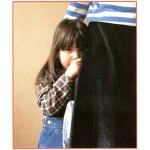
The Island of Missing Trees
I have just read a wonderful book. ‘The Island of Missing Trees’. I feel like picking it up and reading it all over again right now! ‘The Island of Missing Trees’ reflects on a divided island in the Mediterranean, Cyprus, where Greece and Turkey went to war in the 1970s. The author admits it is a book she struggled to write. ‘As a storyteller I could never find an angle, an opening, until I found the fig tree. This may sound weird but I am grateful to the fig tree because it gave me a completely different perspective and only then was I able to start writing the novel.’
A rich, magical new book, ‘The Island of Missing Trees’, talks about belonging and identity, love and trauma, nature and renewal.It is a love story centered around two teenagers, Kostas, a Greek Christian Cypriot who falls in love with Defne, a Turkish Muslim Cypriot – a woman on the other side of the divide. They meet at a tavern on this beautiful island, which they both refer to as ‘home’. A picturesque abode where they flourish and enjoy the wealth of the natural habitat that surrounds them. They are very different; Kostas is gentler and more passionate whereas for Dafne human suffering and injustices are upper most in her mind. Shafak considers herself a citizen of the world but she knows that is as good as being a citizen of nowhere.
As their romance blossoms, Defne and Kostas hide behind the garlands of garlic, honeysuckle, chillis and the branches of a fig tree that grows through the gap in the roof of the tavern while her roots stay firmly in the ground drawing the nutrients from the rich soil. The couple’s clandestine meetings, facilitated by Yiorgos and Yusuf (the owners of the tavern), are watched over by the fig tree which also witnesses their sudden departure when war breaks out. Kostas revisits the tavern decades later, a botanist looking for local specimens or indeed on a mission to find his lost love.
The narrator of the story is indeed a fig tree speaking in the first person and appearing to be a neutral observer. Shafak explains that she wanted an observer that lived longer than human beings. Trees have longevity. They were here before us and they will most probably be here long after we humans have disappeared – but to think more closely about being rooted, uprooted and re-rooted. It is the story of immigrants.
Ada Kazantzakis, Kostas and Defne’s daughter, lives in London, her sole connection with her family and their history is a Ficus Carica that grows in her back garden. She has never visited the island it originated from, nor is she aware of her complicated identity which has always been discussed in hushed voices by her parents. Growing up she is alone – no real friends, no cousins, aunts, uncles, grandparents – where did she belong? Other than her parents, there was really no one she could ask.
The novel’s handling of an episode involving Ada is telling. Early in the novel, Ada starts to scream uncontrollably in her history class. A class mate captures the moment on video and posts it on social media. The video goes viral with its own hashtag ‘doyouhearmenow’ Yet by the end of the novel, this whole episode turns out to be a non-event. Ada just goes back to school, and life goes on. The project of giving voice to the losers of history turns out to be an empty promise that isn’t delivered on. Yes, we hear the voice, but we still don’t know what it is saying.
Despite these tears in the fabric of ‘The Island of Missing Trees’ it grips the imagination and becomes a book to be cherished and savoured. ‘It sings to the senses’ says one critique while another declares that the book teaches us that brokenness can only be healed by love. Intimate in tone and ambitious in its reach, the tale has tenderness and humour. Naming it ‘novel of the week’ the Sunday Telegraph says the book is a tapestry of heavy emotions but is one that is spun with brightness.
One of the most colourful characters depicted in ‘The Island of Missing Trees’ is Defne’s sister, Meryem. She is the first family member that Defne and Kostas’ daughter Ada (meaning ‘island’) meets. Meryem is very traditional unlike her sister. When she hears about Ada’s screaming episode in school she jumps at the chance to dispel whatever djinn, bad spirit, could have invaded Ada. But traditional practices do not impress her niece who will not admit that she is grieving. “We are scared of happiness”, Meryem says, “we share superstitions especially in cultures that have gone through drastic times of turbulence and trauma because people expect every happy moment to be followed by an equal measure of suffering.”
The novel offers many ways to heal. Defne dedicates her life’s work to unearthing victims of the war as a form of reconciliation. In reverse Kostas buries a fig branch in England to save the tree’s life. Meryem uses tradition as a salve and Ada only wants to know the truth about her past.
Family traumas are like thick translucent resin dripping from a cut in the bark. They trickle down generations. Trees live for hundreds if not thousands of years and they continue to collect wisdom throughout their long lives. But humans exist briefly. The traumas they endure compound on top of the trauma they inherit.
When the novel’s sure and towering end arrives, nearly all Shafak’s decisions make sense. The book moves the reader to tears on more than one occasion. The Guardian’s Leone Ross adds that “it humbled her” with the confidence of a storyteller for whom every decision is deliberate. “This is a beautiful novel – imperfect, but made ferocious by its uncompromising empathy.” If you loved and enjoyed reading this novel, do give Asha your ratiocinations and impressions.





Thanks! One to definitely add to my growing list of books to read…